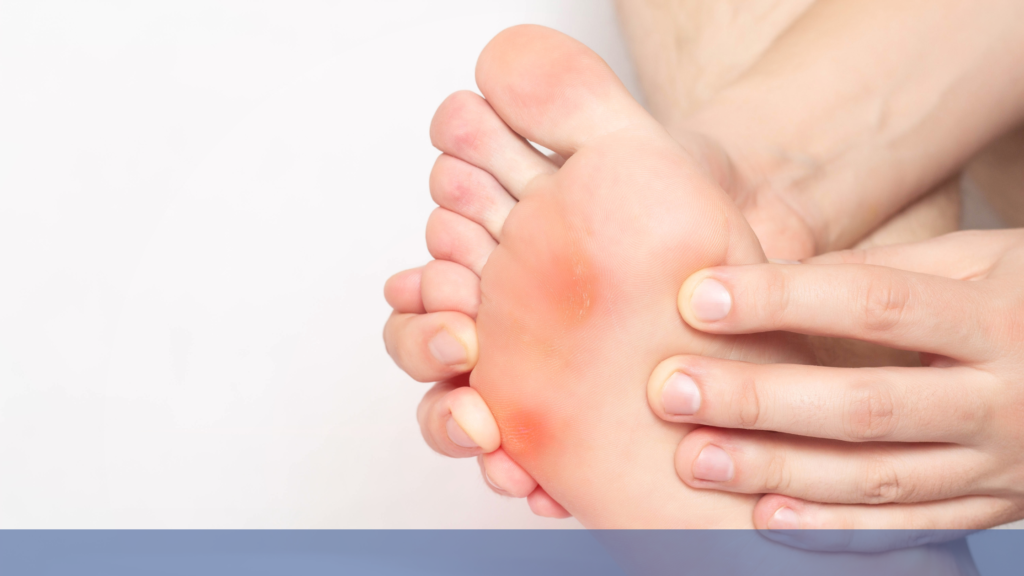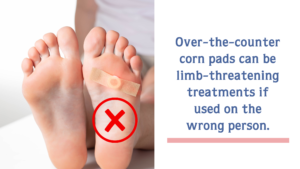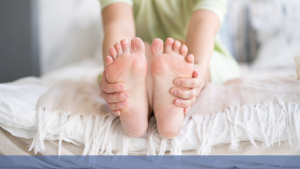Understanding Corns and Calluses: Why DIY Treatments Might be Risky
Corns and calluses may not be the most glamorous topics, but they affect more of us than we might realise. From athletes to the elderly, these thickened areas of skin can develop due to friction or pressure, often causing discomfort and pain. While it might be tempting to grab those over-the-counter corn pads for a quick fix, it’s crucial to understand the risks involved.
What are Corns and Calluses, and What Causes Them?
Our feet bear the brunt of our body weight, especially on the heel and ball of the foot. When this pressure becomes too much, the skin thickens to protect itself. This thickened skin is what we commonly know as calluses.
Calluses are areas of extended, hard skin, usually found on the sole of the foot. They are often a symptom of an underlying issue such as bony deformities, a specific walking style, or ill-fitting shoes. Some individuals are more prone to calluses due to their skin type, and the elderly, with less fatty tissue in their skin, often develop calluses on the balls of their feet.

Corns, on the other hand, are caused by pressure or friction over bony areas, like joints. They have a central core that can press on nerves, causing pain. There are different types of corns:
- Hard Corns: These are the most common, appearing as small areas of concentrated hard skin, usually within a larger area of callus. They can be a sign of feet or toe issues.
- Soft Corns: These develop similarly to hard corns but are whitish and rubbery in texture, often appearing between the toes where the skin is moist.
- Seed Corns: Tiny corns that occur on the bottom of the foot, usually painless.
- Vascular/Neurovascular Corns: Corns with nerve fibers and blood vessels, causing pain and potential bleeding if cut.
- Fibrous Corns: Corns that are firmly attached to deeper tissues after being present for a long time, also causing pain.
The Dangers of DIY Treatments
Now, let’s talk about those corn pads you might see at the pharmacy. While they seem like a quick fix, they can pose serious risks, especially if used incorrectly. Over the last two decades, I’ve encountered numerous cases where these pads have caused more harm than good. From inducing ulcers due to repeated application to causing maceration and burns on surrounding skin, these seemingly harmless products can lead to significant complications.
Why the Warning?
The active ingredient in many corn pads is salicylic acid, often at a concentration of around 40%. While it’s effective at removing dead skin, it’s also potent. For individuals with conditions like peripheral vascular disease or diabetes, using these pads can be risky, potentially leading to limb-threatening issues.

Safe and Effective Treatments
So, what’s the right approach to treating corns and calluses?
- Consult a Professional: Avoid the temptation to self-treat. Instead, seek help from a podiatrist. They can properly assess the corn or callus, treat it with care, and provide solutions tailored to your needs.
- Avoid Over-the-Counter Products: Corn plasters and similar products may seem convenient, but they can do more harm than good. The acids they contain can burn healthy skin, leading to infections.
- Professional Removal: A podiatrist can painlessly remove corns, apply padding or insoles to relieve pressure, and provide long-term solutions for relief.
- Footwear Adjustments: Wearing supportive, well-fitting shoes can reduce pressure on affected areas and prevent further issues.
- Preventive Measures: For those prone to corns and calluses, gentle care at home can help. Use a pumice stone or foot file in the bath to gently remove thickened skin. Apply moisturizing cream and use foam wedges to relieve pressure between toes.

When to Seek Help
Don’t ignore foot care issues, especially if you have diabetes, poor circulation, or a compromised immune system.
Corns and calluses are more than just minor nuisances—they require proper care and attention. While the allure of DIY treatments is strong, especially with over-the-counter products readily available, the risks often outweigh the benefits. By consulting a podiatrist, you’re ensuring that your feet receive the expert care they deserve. Let’s treat our feet with respect and seek professional help when needed.
Remember, your feet carry you through life’s journey. Let’s take care of them together. If you know someone who might benefit from this information, please share this blog with them. Your feet will thank you!
